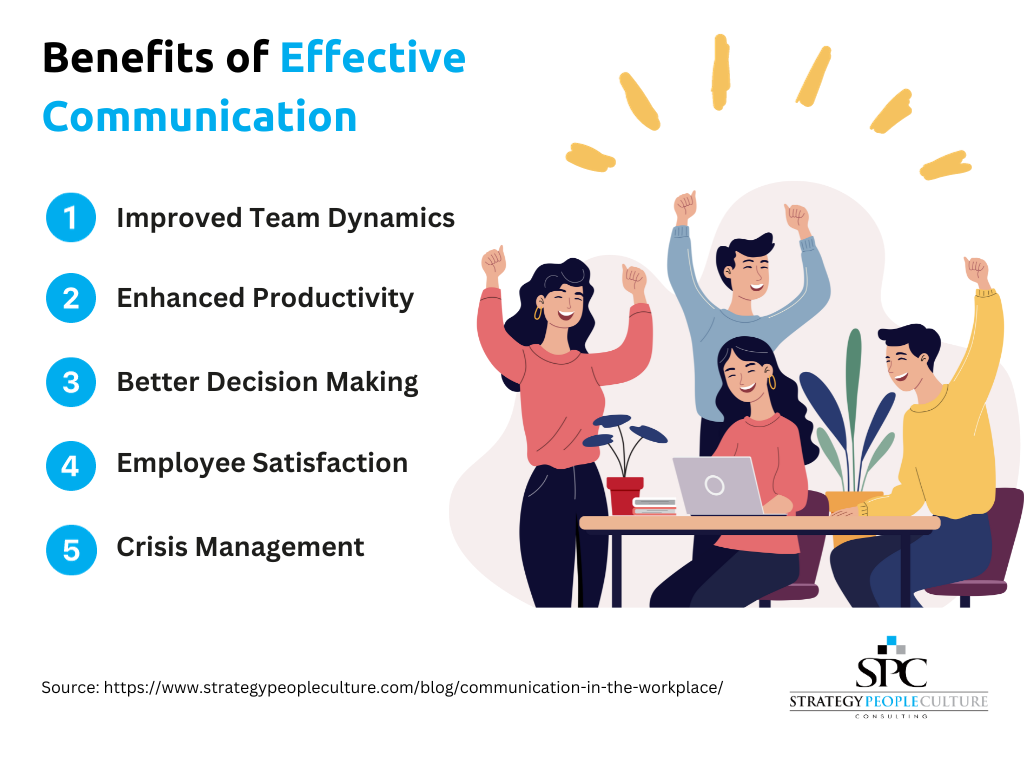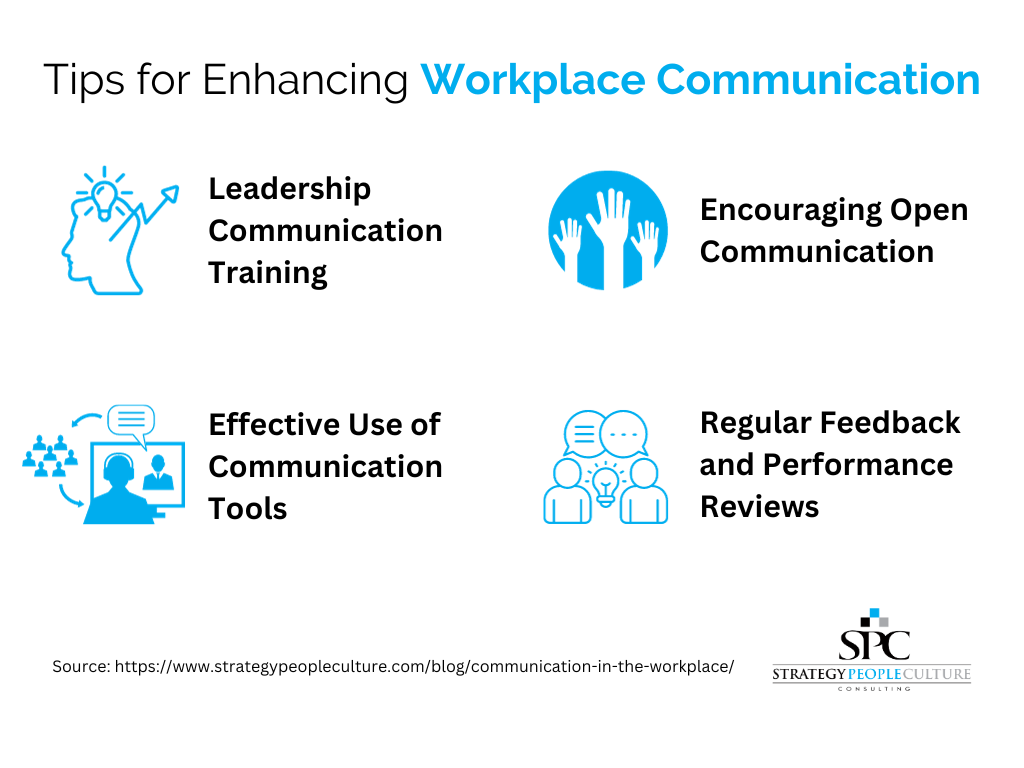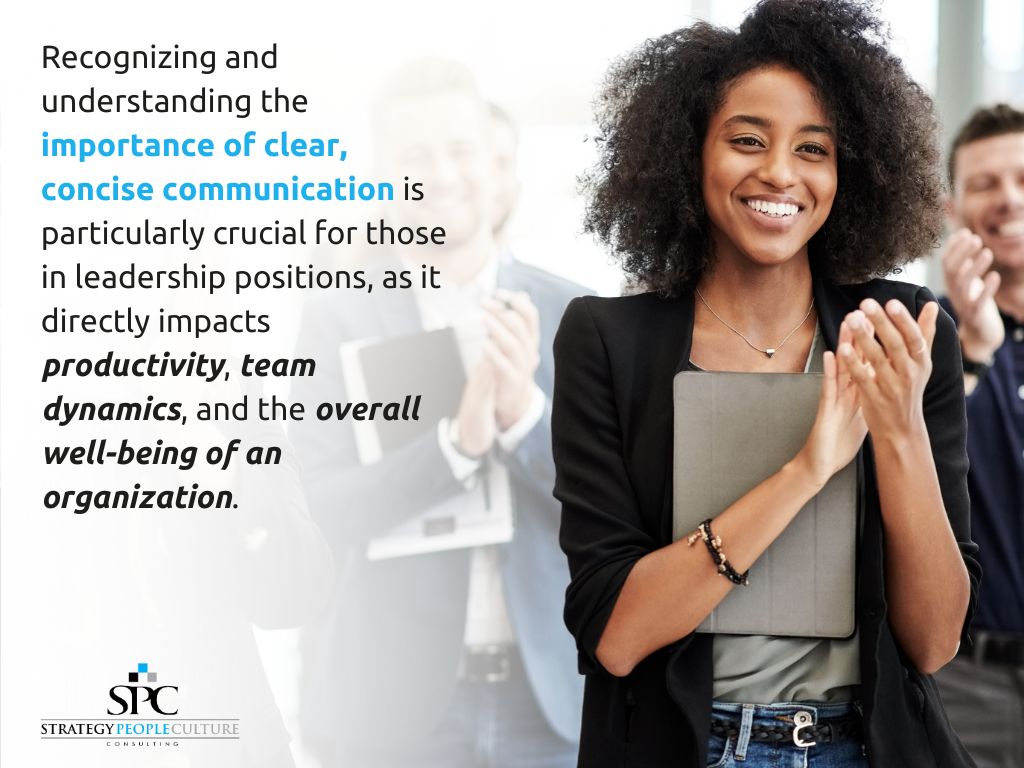Why Effective Communication is the Cornerstone of a Thriving Workplace

Imagine this: A high-stakes project is reaching its final phase, with the entire team working tirelessly to meet the looming deadline. Suddenly, a miscommunication throws everything into disarray; tasks are misunderstood, responsibilities overlap, and deadlines are missed. Although this scenario may seem dramatic, it is not uncommon in the business world and underscores the vital role of effective communication in the workplace.
Recognizing and understanding the importance of clear, concise communication is particularly crucial for those in leadership positions, as it directly impacts productivity, team dynamics, and the overall well-being of an organization. This article aims to delve into the significance of workplace communication and explore practical approaches to enhance its effectiveness.
The Pillars of Effective Communication

Effective business leadership communication involves clear articulation of thoughts, attentive listening, understanding different perspectives, exchanging feedback, and empathizing with team members.
- The first pillar is clarity, ensuring messages are easily understood and unambiguous, fostering shared understanding.
- Active listening, the second pillar, goes beyond hearing to interpret meaning, asking insightful questions, providing thoughtful responses, strengthening relationships, and promoting collaboration.
- Feedback and empathy, the third and fourth pillars, are interconnected. Constructive feedback, delivered with empathy, motivates improvement.
These pillars build a foundation for successful leadership communication, fostering a culture of openness, respect, and growth.
Benefits of Effective Communication

Improved Team Dynamics
When communication flows freely and effectively, it creates an environment rich in trust, cooperation, and understanding. It eliminates the shadows of doubt and misunderstanding that can often lead to conflicts or inefficiencies. Moreover, this atmosphere of open dialogue encourages team members to develop a deeper sense of trust towards each other, underpinning a robust team dynamic.
Enhanced Productivity
Open channels of communication ensure that every team member is on the same page, paving the way for smooth collaboration and quicker decision-making. Furthermore, constructive feedback, when communicated effectively, aids in identifying areas of improvement, encouraging continual learning and performance enhancement.
Better Decision Making
Complete, accurate, and timely information is the backbone of any decision-making process. It allows teams to evaluate different options, understand potential outcomes, and choose the path that best aligns with the company’s goals. Furthermore, clear communication encourages the sharing of diverse perspectives and ideas, leading to more innovative and effective solutions.
Employee Satisfaction
When employees feel valued and heard, they are more likely to be motivated, productive, and committed to the organization’s success. The ability to communicate openly with superiors about expectations, progress, and potential obstacles can significantly reduce work-related stress, contributing to an overall sense of job satisfaction.
Crisis Management
By fostering an environment where concerns are listened to and addressed promptly, leaders can navigate their teams through turbulent times, mitigating potential damages and steering the organization towards a swift recovery. Furthermore, open dialogues allow for swift problem-solving, as diverse perspectives can quickly be collated and considered.
Challenges of Poor Communication

Decreased Morale
Ineffective communication creates exclusion and mistrust, dividing teams and impacting collaboration and productivity. It can lead to misunderstandings, lack of clarity, and ineffective dialogues. Misunderstandings cause confusion, frustration, and conflicts, hindering team operations. Unclear communication results in employees feeling uncertain about roles, responsibilities, and expectations, reducing job satisfaction and motivation.
Loss of Time and Resources
Unclear messages lead to incorrect or inefficient tasks, as team members may not understand their roles or project objectives. This decreases productivity and increases the costs of correcting mistakes. Ultimately, ineffective communication negatively impacts the company’s bottom line, highlighting financial implications.
Barriers to Innovation
When communication is lacking, organizational silos may impede idea flow and collaboration. These silos can hinder the creative process, as employees may hesitate to share unique perspectives or innovative solutions. A lack of open dialogue and cross-departmental communication exacerbates this issue, limiting collaboration and stifling new ideas.
Lack of Alignment of Goals and Outcomes
The risk of organizational goals and team outcomes become misaligned when objectives are either unclear or misunderstood. This lack of clarity and understanding leads to a loss of direction and focus. Different interpretations of objectives can result in work that does not contribute to strategic goals. Poor communication can also hinder setting realistic and measurable targets.
Tips for Enhancing Workplace Communication

Leadership Communication Training
Investing in leadership communication training can bring immense benefits to an organization. Specialized training programs and workshops are designed to provide leaders with the tools and techniques needed to communicate effectively, addressing specific areas such as public speaking, negotiation, conflict resolution, and team motivation. These training sessions not only enhance individual communication capabilities but also cultivate a culture of clear, open, and effective communication throughout the organization. Consequently, leaders become more effective in their roles, and teams become more cohesive and productive.
Encouraging Open Communication
An open-door policy enhances communication and contributes to a more engaged, collaborative, and productive workplace. This approach shows leaders are approachable, ready to listen, and open to feedback. It encourages employees to freely voice their thoughts, ideas, and concerns, fostering enhanced two-way communication. Actively listening to team members demonstrates respect and acknowledgment, reinforcing the notion that every voice matters.
Effective Use of Communication Tools
Communication apps like Slack or Microsoft Teams may also play a role in facilitating seamless dialogue among team members. These platforms support real-time exchange of ideas, instant feedback, and quick resolution of queries. Regular video conferencing through platforms like Zoom or Google Meet can also complement these communication channels, particularly for remote teams, offering a more personal and engaging interaction.
Regular Feedback and Performance Reviews
Organizations thrive by fostering a culture of continuous learning, growth, and improvement. Regular feedback and performance reviews are critical in this process. These sessions provide a platform for open communication, allowing team members to voice concerns and discuss areas of improvement. Most importantly, regular and ongoing timely feedback helps to avoid the surprises, and potential disappointments, at annual review time.
Case Studies of Effective Communication in Leading Companies

Let’s delve into the real-world successes of companies that have made effective communication an integral part of their culture. These examples underscore the transformative power of strong communication in fostering a vibrant, productive, and harmonious workplace.
Google serves as a prime example of a company that excels in implementing effective communication strategies. Google’s bi-weekly ‘TGIF’ meetings embody this culture, allowing direct interaction with top executives, including the CEO. This practice fosters transparency, innovation, and a sense of belonging.
Southwest Airlines
Southwest Airlines, renowned for exceptional customer service, attributes its success to a robust internal communication strategy. The company’s leadership prioritizes employee engagement and fosters an inclusive environment where everyone’s voice is heard. Their commitment serves as a valuable lesson for organizations seeking success through engaged employees, satisfied customers, and adept crisis management.
Zappos
Zappos, an online shoe and clothing retailer, is renowned for its unique company culture centered around open communication. CEO Tony Hsieh believes that “open, honest communication is the best foundation for any relationship.” Transparency is a core value at Zappos, with regular ‘All Hands’ meetings for team members to ask questions and provide feedback, fostering a communication-rich culture.
Conclusion
The significance of effective communication in the workplace cannot be overstated. As a cornerstone of successful business operations, it directly influences team dynamics, productivity, and the overall health of an organization. As business leaders, owners, and executives, it is incumbent upon us to prioritize clear and open dialogue, fostering an environment of trust, mutual respect, and collaboration.
We at Strategy People Culture are committed to assisting companies in helping leaders identify ways to improve their own and organization-wide communication, and creating a culture that values and prioritizes effective communication. Call (833) ROCK – SPC today or schedule a consultation online and take a pivotal step toward transforming your workplace communication. Let’s embark on this journey of continual improvement and growth together.
